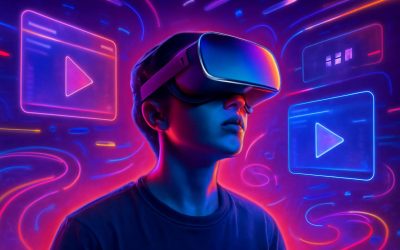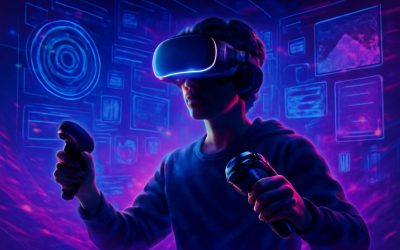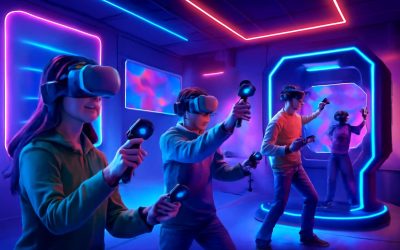
VR is a technology that uses a headset or computer to create a virtual 3D world. This can be used for a variety of applications including gaming, entertainment and training.
It’s a new technology that has emerged in recent years and is transforming how we view the world around us. The most common use of VR is in the form of video games, but there are a number of other applications.
The Technology
Unlike other forms of technology such as television or film, VR can be fully immersive and provide an experience that’s entirely different from the real world. In addition, it can be highly interactive and allow for a truly collaborative experience.
The Basics of Virtual Reality
A VR system usually consists of a head-mounted display with stereo speakers and input tracking technology to make the user feel like they’re interacting with a real-world environment. It can also incorporate haptics and sensor technology to provide additional sensory feedback that makes the experience more realistic.
When a person first uses VR, they may experience a number of problems such as disorientation or nausea. These issues are often referred to as “simulator sickness” and can be mitigated with a number of technological solutions.
One of the most popular features of a VR system is the head-mounted display, which blocks out information from the real world and presents a simulated environment to the user. This is achieved by using two autofocus lenses that sit between the eyes and adjust to changes in the user’s eye movement and position.
This allows the user to move around freely and interact with the virtual environment. The headset also displays the virtual environment in a split screen format, with each eye seeing a separate feed of the world.
Another feature that’s becoming increasingly popular is the ability to track hand movements and interact with the virtual environment with those movements. This is a huge advancement for VR and could make it much more enjoyable to use.
The Virtual World
Depending on the type of VR system, the virtual world could be created in a hologram-like fashion or in an actual three-dimensional environment. Regardless of the method, the virtual world must be designed to appear life-sized and must respond to the user’s movements in real time.
There are also many factors to consider when designing a virtual world. These include the depth of information and breadth of information that the user will receive.
The depth of information refers to the amount and quality of data that the user can see, hear and touch in a given virtual space. It also entails the ability of the user to orient themselves in the virtual environment with haptic feedback and optical tracking sensors.
A virtual world should also be made to be visually interesting and have a variety of visual elements that the user can explore and interact with. This can be done with the help of a range of visual elements, such as graphical effects, animations, textual content and sound.



0 Comments